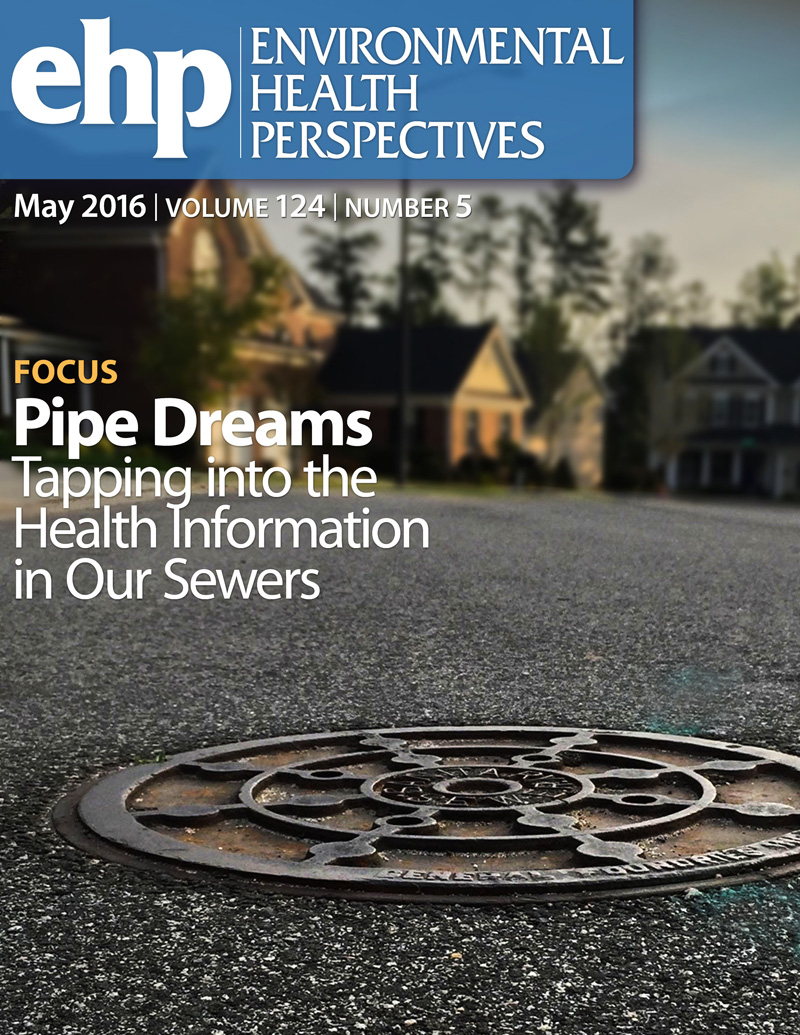母亲接触全氟和多氟烷基物质与后代染色体异常:日本环境与儿童研究》。
IF 9.8
1区 环境科学与生态学
Q1 ENVIRONMENTAL SCIENCES
引用次数: 0
摘要
背景尽管最近的体外实验结果提出了母体暴露于全氟烷基和多氟烷基物质(PFAS)是否可能成为染色体异常的潜在环境风险因素的问题,但目前还缺乏调查这些关联的流行病学研究。方法 我们使用了日本环境与儿童研究(一项全国性的出生队列研究)的数据,并采用逻辑回归模型研究了母体在怀孕头三个月的血浆中 PFAS 浓度与 2 岁前所有新生儿(人工流产、流产、死胎和活产)染色体异常诊断之间的关联。结果最终样本包括 24,724 例单胎妊娠新生儿,其中 44 例确诊染色体异常(发病率:17.8/10,000 例新生儿)。在单独检测时,暴露于全氟壬酸(PFNA)和全氟辛烷磺酸(PFOS)与任何染色体异常均呈正相关,经年龄调整后,浓度每增加一倍的几率比分别为 1.81(95% CI:1.26,2.61)和 2.08(95% CI:1.41,3.07)。在进行 Bonferroni 校正后,这些关联性仍具有显著性,尽管在某些敏感性分析中,这些关联性未达到调整后的显著性阈值。此外,作为混合物纳入的所有全氟辛烷磺酸浓度每增加一倍都与染色体异常有关,表明经年龄调整后的几率比为 2.25(95% CI:1.34, 3.80),其中全氟辛烷磺酸的几率比最高。讨论 研究结果表明,母体接触全氟辛烷磺酸(尤其是全氟辛烷磺酸)与后代染色体异常之间可能存在关联。然而,对研究结果的解释应谨慎,因为招募孕早期妇女所产生的选择偏差可能是造成这种关联的原因。https://doi.org/10.1289/EHP13617。本文章由计算机程序翻译,如有差异,请以英文原文为准。
Maternal Exposure to Per- and Polyfluoroalkyl Substances and Offspring Chromosomal Abnormalities: The Japan Environment and Children's Study.
BACKGROUND
Although recent in vitro experimental results have raised the question of whether maternal exposure to per- and polyfluoroalkyl substances (PFAS) may be a potential environmental risk factor for chromosomal abnormalities, epidemiological studies investigating these associations are lacking.
OBJECTIVES
This study examined whether prenatal PFAS exposure is associated with a higher prevalence of chromosomal abnormalities among offspring.
METHODS
We used data from the Japan Environment and Children's Study, a nationwide birth cohort study, and employed logistic regression models to examine the associations between maternal plasma PFAS concentrations in the first trimester and the diagnosis of chromosomal abnormalities in all births (artificial abortions, miscarriages, stillbirths, and live births) up to 2 years of age. In addition, we examined associations with mixtures of PFAS using multipollutant models.
RESULTS
The final sample consisted of 24,724 births with singleton pregnancies, of which 44 confirmed cases of chromosomal abnormalities were identified (prevalence: 17.8/10,000 births). When examined individually, exposure to perfluorononanoic acid (PFNA) and perfluorooctane sulfonic acid (PFOS) showed positive associations with any chromosomal abnormalities with age-adjusted odds ratios of 1.81 (95% CI: 1.26, 2.61) and 2.08 (95% CI: 1.41, 3.07) per doubling in concentration, respectively. These associations remained significant after Bonferroni correction, although they did not reach the adjusted significance threshold in certain sensitivity analyses. Furthermore, the doubling in all PFAS included as a mixture was associated with chromosomal abnormalities, indicating an age-adjusted odds ratio of 2.25 (95% CI: 1.34, 3.80), with PFOS as the predominant contributor, followed by PFNA, perfluoroundecanoic acid (PFUnA), and perfluorooctanoic acid (PFOA).
DISCUSSION
The study findings suggested a potential association between maternal exposure to PFAS, particularly PFOS, and chromosomal abnormalities in offspring. However, the results should be interpreted cautiously, because selection bias arising from the recruitment of women in early pregnancy may explain the associations. https://doi.org/10.1289/EHP13617.
求助全文
通过发布文献求助,成功后即可免费获取论文全文。
去求助
来源期刊

Environmental Health Perspectives
环境科学-公共卫生、环境卫生与职业卫生
CiteScore
14.40
自引率
2.90%
发文量
388
审稿时长
6 months
期刊介绍:
Environmental Health Perspectives (EHP) is a monthly peer-reviewed journal supported by the National Institute of Environmental Health Sciences, part of the National Institutes of Health under the U.S. Department of Health and Human Services. Its mission is to facilitate discussions on the connections between the environment and human health by publishing top-notch research and news. EHP ranks third in Public, Environmental, and Occupational Health, fourth in Toxicology, and fifth in Environmental Sciences.
 求助内容:
求助内容: 应助结果提醒方式:
应助结果提醒方式:


